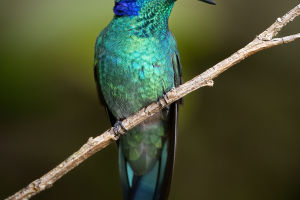The snowy egret, an exquisite wading bird, is distributed across the Americas and is celebrated for its pure white plumage and slender form.
As a vital component of wetland ecosystems, this bird not only contributes significantly to ecological balance but also captivates observers with its distinctive beauty and behavioral traits.
Characteristically, the snowy egret is relatively small compared to other wading birds. Its body length ranges between 56 and 66 centimeters, and it boasts a wingspan of approximately 88 to 106 centimeters.
The bird's slender legs and elongated neck contribute to its graceful appearance, especially when it navigates through shallow waters. Snowy egrets are entirely white, but during the breeding season, adult males develop delicate, ornamental feathers that enhance their charm and serve as a key attraction in courtship displays.
These feathers, known as aigrettes, are a focal point during mating rituals, with males performing elaborate displays to attract females.
Snowy egrets inhabit a variety of warm, aquatic environments, including wetlands, swamps, riverbanks, and saline-alkaline flats. These habitats are crucial as they provide ample food resources and favorable conditions for nesting.
As carnivorous birds, snowy egrets primarily consume small fish, insects, and crustaceans. Their foraging behavior is both strategic and elegant; they typically stand at the water's edge, employing their sharp vision and agile movements to capture prey.
In addition, snowy egrets occasionally use their long legs to stir the water, a technique that drives prey closer to where it can be more easily caught.
During the breeding season, snowy egrets construct their nests in trees or shrubs, preferably near water sources. These nests, built from twigs and other plant materials, are positioned high above the ground to minimize the risk of predation by terrestrial predators.
Courtship involves the male spreading his wings and flaunting his ornamental feathers to impress potential mates. Following successful mating, the female lays between 3 to 5 eggs in the nest.
The incubation period lasts around three weeks, after which the chicks hatch. Both parents are involved in nurturing their young, providing careful feeding and protection to ensure the chicks' healthy development.
The snowy egret's distribution extends from Canada in North America to Argentina in South America. While populations in some areas remain stable, others face declines due to habitat loss and environmental pollution.
The degradation of wetlands and contamination from pollutants adversely affect these birds, making habitat conservation a critical aspect of their protection.
Efforts to safeguard snowy egret populations involve preserving and restoring their natural habitats, implementing pollution controls, and promoting awareness about their ecological significance.
Climate change also poses a significant threat to snowy egrets. Rising sea levels and increased frequency of extreme weather events can disrupt their habitats and impact their survival. Coastal erosion, changes in salinity, and alterations in prey availability are some of the challenges that may arise from climate change.
Addressing these issues requires a multifaceted approach, including habitat restoration, climate adaptation strategies, and global efforts to mitigate climate change.
The snowy egret is not only admired for its stunning appearance but also for its role in maintaining ecological balance within wetland ecosystems. Protecting this species and its habitat is essential for sustaining the health of these environments and preserving the natural beauty that snowy egrets contribute to our world.
Efforts to ensure their survival must consider the impacts of both environmental degradation and climate change, aiming to create a more resilient and harmonious coexistence between humans and wildlife.
By taking these actions, we can continue to appreciate the elegance and ecological importance of the snowy egret for generations to come.


